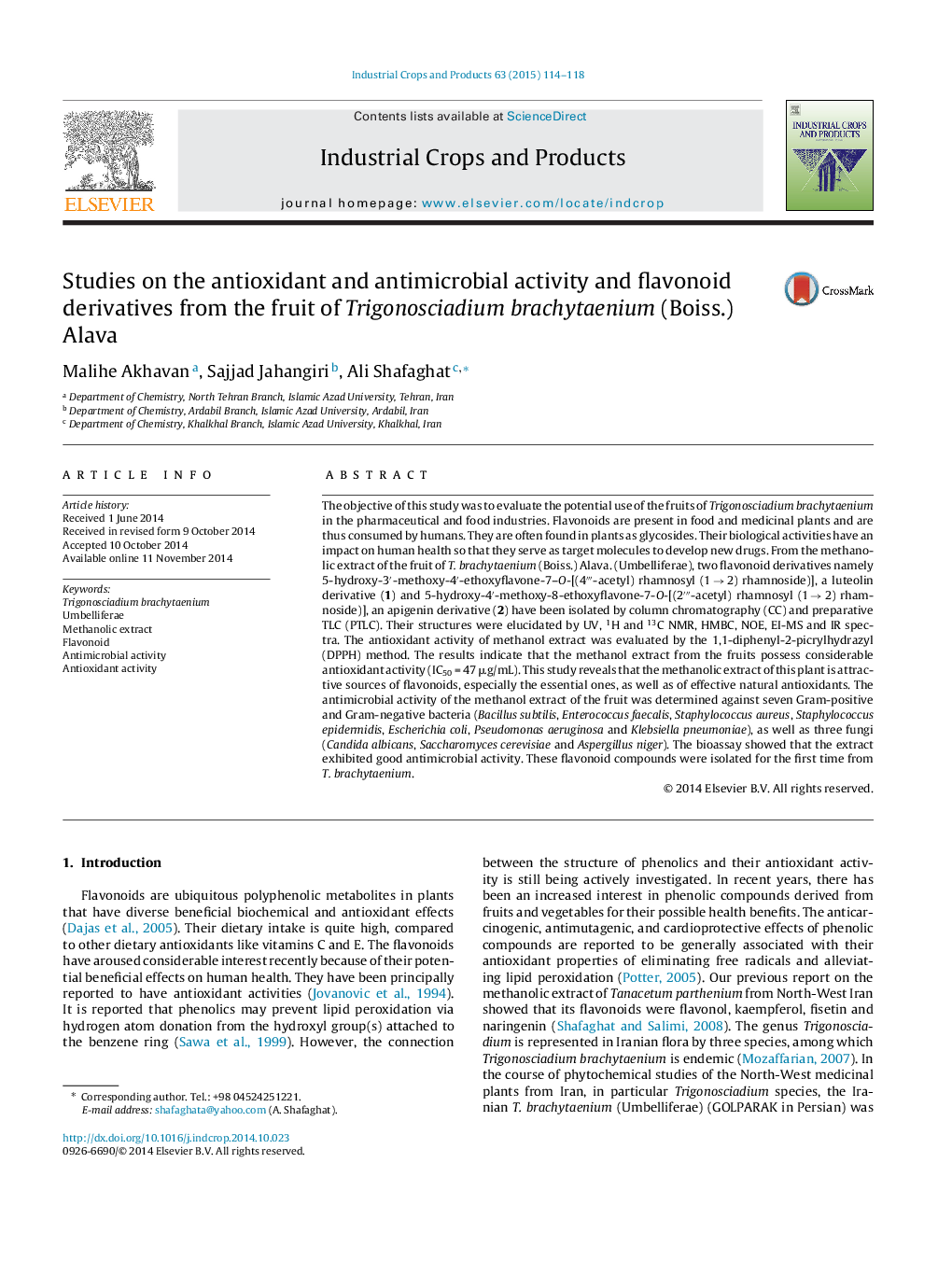| Article ID | Journal | Published Year | Pages | File Type |
|---|---|---|---|---|
| 4513248 | Industrial Crops and Products | 2015 | 5 Pages |
•Trigonosciadium brachytaenium extract was used as antioxidant agent.•The bioassay showed that the methanol extract showed an antioxidant activity.•This study reveals that the aerial parts of this plant are attractive sources of flavonoids components, especially the essential ones, as well as of effective natural antioxidants.•It is conceivable that the antioxidant property of the extract from T. brachytaenium might be ascribed to its high content of flavonoids.
The objective of this study was to evaluate the potential use of the fruits of Trigonosciadium brachytaenium in the pharmaceutical and food industries. Flavonoids are present in food and medicinal plants and are thus consumed by humans. They are often found in plants as glycosides. Their biological activities have an impact on human health so that they serve as target molecules to develop new drugs. From the methanolic extract of the fruit of T. brachytaenium (Boiss.) Alava. (Umbelliferae), two flavonoid derivatives namely 5-hydroxy-3′-methoxy-4′-ethoxyflavone-7–O-[(4‴-acetyl) rhamnosyl (1 → 2) rhamnoside)], a luteolin derivative (1) and 5-hydroxy-4′-methoxy-8-ethoxyflavone-7-O-[(2‴-acetyl) rhamnosyl (1 → 2) rhamnoside)], an apigenin derivative (2) have been isolated by column chromatography (CC) and preparative TLC (PTLC). Their structures were elucidated by UV, 1H and 13C NMR, HMBC, NOE, EI-MS and IR spectra. The antioxidant activity of methanol extract was evaluated by the 1,1-diphenyl-2-picrylhydrazyl (DPPH) method. The results indicate that the methanol extract from the fruits possess considerable antioxidant activity (IC50 = 47 μg/mL). This study reveals that the methanolic extract of this plant is attractive sources of flavonoids, especially the essential ones, as well as of effective natural antioxidants. The antimicrobial activity of the methanol extract of the fruit was determined against seven Gram-positive and Gram-negative bacteria (Bacillus subtilis, Enterococcus faecalis, Staphylococcus aureus, Staphylococcus epidermidis, Escherichia coli, Pseudomonas aeruginosa and Klebsiella pneumoniae), as well as three fungi (Candida albicans, Saccharomyces cerevisiae and Aspergillus niger). The bioassay showed that the extract exhibited good antimicrobial activity. These flavonoid compounds were isolated for the first time from T. brachytaenium.
